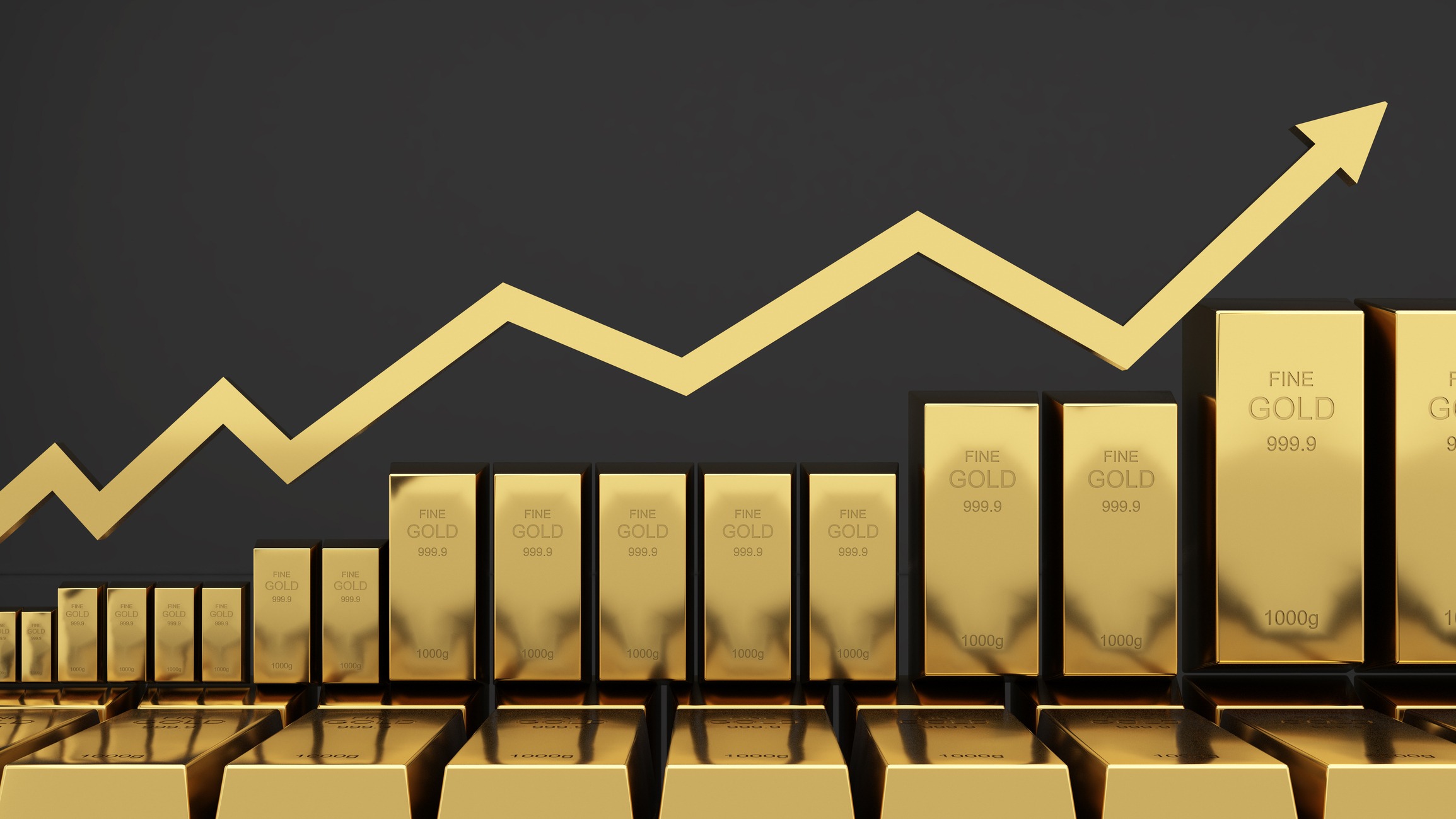Should Gold Have a Place in Your Portfolio? A Professional Perspective.
In an unpredictable world, many investors naturally turn to gold. The allure of this precious metal as a potential "safe haven" during economic or political turbulence is strong, offering a sense of stability when other markets feel volatile. However, while gold can indeed play a valuable role, its price can also fluctuate, making a clear-eyed understanding of its dynamics and risks essential before you commit your capital.
Let's explore what every thoughtful investor should know about gold.
The Timeless Appeal of Gold
For millennia, gold has captivated humanity. From its earliest uses as currency to its enduring status as a symbol of wealth and power, its appeal is deeply rooted. Gold's intrinsic value is partly due to its rarity – remarkably, the world produces more steel in an hour than it has poured gold throughout recorded history. Beyond its historical significance, gold remains relevant today, serving crucial functions in modern technology, from the smartphones in our pockets to the electric vehicles on our roads.
Why Consider Gold for Your Investments?
Investors typically weigh gold for several compelling reasons:
- Preserving Your Wealth: Gold has a long-standing reputation as a reliable store of value, especially over extended periods. Consider this: an investment of around £200 in an ounce of gold in late 1990 would today be worth approximately 650% more, effectively outpacing inflation. In stark contrast, that same £200 held as cash would have diminished in purchasing power.
- Diversifying Your Portfolio: Gold often behaves differently from other major asset classes like stocks and real estate. This 'negative correlation' means that when stock markets face headwinds, gold may rise. This characteristic makes it a powerful tool for diversification, potentially cushioning your portfolio against broader market downturns and contributing to overall stability.
- A Refuge in Uncertainty: Gold has consistently demonstrated its "safe haven" qualities during times of heightened global uncertainty. Its price soared past $1,000 an ounce (the widely recognized global benchmark) during the 2008 financial crisis and climbed beyond $2,000 during the COVID-19 pandemic. More recently, in a period where stock markets experienced significant volatility – including a notable 19% peak-to-trough fall for US shares – gold has shone brightly. The precious metal is up over 26% so far in 2025, reaching a record $3,335 an ounce. This robust performance reinforces its role as a potential haven amidst economic shocks. As highlighted in our latest quarterly Investment Outlook, "Many investors are starting to see the precious metal as a key component of a balanced portfolio. That looks sensible. Gold is traditionally viewed as a safe haven asset, and it performs well at times of heightened uncertainty... There are good reasons to believe it will stay above $3,000 now and Goldman Sachs recently upgraded its yearend forecast to $3,300 an ounce."
- Potential for Capital Growth: Unlike income-generating assets such as dividend-paying stocks or interest-bearing bonds, gold itself doesn't produce ongoing income. The pathway to profit with gold lies purely in capital appreciation – the hope that you can sell it for more than you paid.
Navigating Your Gold Investment Options
There are several avenues to gain exposure to gold, each with distinct features:
Physical Gold (Bullion and Coins)
- Direct Ownership: You can purchase physical gold coins and gold bars in various sizes from reputable dealers like The Royal Mint. Smaller denominations can offer a more accessible entry point.
- Tax Efficiency for UK Investors: Notably, UK-denominated gold bullion coins benefit from Capital Gains Tax (CGT) exemption, a valuable consideration for UK-based investors with larger portfolios.
- Practicalities of Storage: Owning physical gold necessitates secure storage. This could involve a robust home safe or, more commonly, professional storage services with a custodian, such as The Royal Mint's secure vault. Be mindful that storage and insurance fees will be part of your overall cost.
- Understanding Premiums: The price you pay for physical gold products includes a 'premium' above the raw metal's spot price. This premium tends to be higher for smaller items due to the increased manufacturing, packaging, and distribution costs per unit. For instance, purchasing a single 100g gold bar is generally more cost-efficient per gram than acquiring 100 individual 1g bars, even though the total gold content is identical.
Digital Gold
- For those interested in gold exposure without the responsibilities of physical ownership, DigiGold offers a compelling alternative. This digital approach often features lower initial investment thresholds, sometimes as little as £25, and typically carries lower premiums because the associated storage and distribution costs for the retailer are significantly reduced compared to physical products.
Financial Instruments
- Exchange Traded Funds (ETFs) and Exchange Traded Commodities (ETCs): These are a popular and direct way to invest in gold without holding the physical asset. Traded on stock exchanges like shares, the best physical gold ETFs/ETCs aim to closely track the gold price for a low fee. Many are backed by actual gold held in secure vaults, providing direct exposure to the spot price (the prevailing market price for immediate delivery, predominantly quoted in US Dollars). For investors primarily seeking gold as a portfolio diversifier against equities, a physical gold ETC is often the most direct and efficient choice.
- Gold Mining Company Shares/Funds: Investing in the companies that mine gold, often through specialized funds, offers a different type of exposure. While certainly influenced by gold prices, these investments tend to exhibit greater volatility. A rising global gold price can disproportionately boost miners' profits due to their substantial fixed operating costs. This can lead to periods where mining shares deliver stronger returns than the physical metal itself. However, mining companies face unique challenges. The inflationary pressures witnessed since 2021, for example, have increased operational costs, impacting profits. Higher interest rates also elevate borrowing costs. These factors can sometimes lead to gold mining shares underperforming the actual gold price over shorter timeframes. For those targeting long-term outperformance over the gold price itself, gold miners might be attractive. Naturally, splitting your gold allocation between physical gold exposure and mining equities is also an option.
- Futures Contracts: For sophisticated investors and speculators, futures markets provide a leveraged way to trade gold. A typical gold futures contract represents 100 ounces. While leverage can amplify profits from favourable price movements, it equally magnifies losses, with a small price drop potentially eroding a significant portion of an initial investment. Futures trading also involves substantial fees and commissions, which can be considerable.
- Managed Investment Funds: These funds strategically invest across a range of gold and gold mining companies, offering broader diversification within the gold sector and potentially smoother performance than direct investments in individual mining stocks.
Important Considerations and Potential Risks
While gold presents attractive benefits, it's vital to be aware of its inherent characteristics and risks:
- Price Volatility: Despite its reputation as a "safe haven," gold's price can be volatile. It is influenced by a complex interplay of global supply and demand, the health of the global economy, geopolitical developments, inflation expectations, and the relative strength of the US Dollar (which, as the primary currency for gold trading, can significantly impact gold's price when converted to other currencies like the British Pound). If you are uncertain about whether gold aligns with your investment profile, seeking professional financial advice is prudent.
- No Income Generation: Unlike investments that generate dividends or interest, gold itself is a non-income-producing asset. Your return hinges entirely on its market price appreciation. As legendary investor Warren Buffett famously noted, gold "doesn't do anything but sit there and look at you."
- Unregulated Market & Scams: The broader physical gold market, particularly involving smaller, less established dealers, operates with less regulation. Exercise extreme caution regarding high-pressure sales tactics, promises of guaranteed, outsized returns, or offers that demand only a small upfront payment, especially if prompt physical delivery (within 28 days) is not explicitly assured. Be aware that firms selling and delivering physical precious metals within 28 days are generally not required to be registered with securities regulators. Diligent research is paramount.
- Associated Costs: Premiums, ongoing storage fees, commissions, and transaction costs can all reduce your net returns.
How Much Gold is Right for Your Portfolio?
For most investors, gold is best treated as a minority component within a well-diversified portfolio. If your primary objective for holding gold is to hedge against extreme market uncertainty, a typical allocation of 5% to 10% is often recommended. A smaller allocation might not offer the impactful diversification you seek during periods of heightened volatility. Conversely, remember that a larger weighting towards gold could potentially dampen overall portfolio growth during times when traditional growth assets like equities are performing strongly.
It's crucial to remember that past performance is never an indicator or guarantee of future returns. The value of investments, and the income they may generate, can both fall as well as rise, meaning you could get back less than your initial investment.
Ultimately, the decision to incorporate gold into your portfolio, and its ideal weighting, should align with your individual financial objectives, risk tolerance, and comprehensive investment strategy. Professional financial advice can provide invaluable guidance in making these important decisions.
Here are some FAQs that align with the article's tone and content, presented in a "People also ask" format:
Frequently Asked Questions
How can a beginner buy gold?
A beginner can buy gold in several ways, even without physically owning bars or coins. For UK investors, popular options include:
- Physical Gold: Purchasing gold coins (like Britannias or Sovereigns, which are CGT exempt in the UK) or smaller gold bars from reputable dealers such as The Royal Mint or other established bullion dealers. You can choose to have these delivered or stored securely in their vaults (for a fee).
- Digital Gold: Services like The Royal Mint's DigiGold allow you to invest in fractional shares of larger gold bars from as little as £25, without the need for physical storage yourself.
- Gold ETFs/ETCs: These are financial instruments traded on stock exchanges that aim to track the price of physical gold very closely. They are a convenient way to gain exposure without the logistics of storage, though they typically incur annual management fees.
- Gold Mining Funds: Investing in funds that hold shares in gold mining companies. This offers a different kind of exposure, as the fund's performance is tied to the profitability of the mining companies, which can be more volatile than the gold price itself.
For beginners, starting with a small allocation through an ETF/ETC or digital gold service can be a straightforward way to gain exposure before considering physical bullion.
Is it worth buying gold?
Whether buying gold is "worth it" depends on your individual investment goals and risk tolerance. Gold is primarily considered for:
- Wealth Preservation: It can act as a store of value, especially during periods of inflation, potentially protecting your purchasing power over the long term.
- Portfolio Diversification: Gold often moves independently of other assets like stocks, making it a valuable tool to reduce overall portfolio risk, especially during market downturns.
- Hedge Against Uncertainty: Historically, gold has performed well during times of economic or geopolitical instability, offering a "safe haven" for capital.
However, it's crucial to remember that gold does not generate income (like dividends or interest), and its value can still be volatile. It's generally recommended as a minority position (e.g., 5-10%) within a well-diversified portfolio, rather than a primary growth driver.
How much is 1 kg of gold worth?
The value of 1 kg of gold fluctuates constantly based on the live global spot price, which is primarily denominated in US Dollars. As of Tuesday, July 8, 2025, the spot price for 1 kilogram of gold in GBP (British Pounds) is approximately £78,085.
It's important to note that when you purchase physical gold, the final price will include a 'premium' over this spot price. This premium covers costs like manufacturing, refining, and distribution. Larger bars generally have a lower percentage premium than smaller denominations.
What is the best way of buying gold?
There isn't a single "best" way to buy gold, as the ideal method depends on your objectives, investment size, and comfort with different investment types:
- For direct exposure to the gold price with convenience: Physical Gold ETCs (Exchange Traded Commodities) are highly regarded. They are listed on stock exchanges, easy to buy and sell, and typically backed by actual gold, offering a low-cost way to track the gold price.
- For small, regular investments or digital convenience: Digital gold platforms (like DigiGold) allow you to invest in gold without physical ownership, often with very low entry points.
- For physical ownership and potential CGT exemption (in the UK): Physical gold coins (especially UK legal tender such as Britannias and Sovereigns) and gold bars purchased from reputable dealers are suitable, though you'll need to consider secure storage.
- For amplified exposure to gold's movements (with higher risk): Investing in gold mining company funds or shares can offer potentially higher returns if gold prices rise significantly, but they also carry additional business-specific risks and can be more volatile.
Always research the specific provider, understand any associated fees (premiums, storage, management fees), and ensure they are reputable before making a purchase.
Investing Articles:
Beyond the S&P 500: Top-Performing ETFs to Watch in H2 2025
How to Trade Global Stocks with Low Fees and Real-Time Tools
Investing Terms for Beginners: Your Essential Glossary (June 2025)













